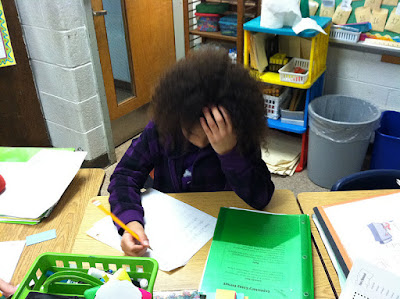Preparing for the millipedes! Students met in their science groups to make a hypothesis of what they will need in order to create a millipede habitat.
Next they created the habitats.
Meet the millipedes!
Students put 3-4 millipedes in the habitats they created for them.
Yes, YOUR children put a glove on their hand and sifted through a small bucket to retrieve the millipedes. You didn't actually think I touched them?! :)
I'm sure many of you heard about SEVERAL frogs trying to escape as their habitats were being cleaned. Perhaps your child came home and told you they witnessed their teacher screaming while jumping up and down and yelling, "Oh my goodness! I don't know what to do! I don't know what to do!" Thankfully many children jumped at the opportunity to safely scoop up the fugitive frogs. Phew!
I have to say, the best part about this unit is how well the groups work together. Even if they begin to argue, they resolve their problems on their own and work together to feed the animals and clean all of the habitats.
Speaking of being one proud and lucky teacher, I was thrilled while I was working with a math group at the carpet, and some students took it upon themselves to assist anyone who needed help with division. I will never forget being in elementary school and struggling to learn long division! I still have nightmares!
In Writer's Workshop, students learned about idioms and how they can make your writing more colorful and interesting. First, I read aloud the hilarious story Even More Parts by Tedd Arnold. The story is about a boy, who hears adults saying many scary and dangerous things. He writes them all down on paper so is he is prepared to leave his bedroom.
Students were then given a sheet of frequently used idioms to keep in their Writing Resources section of their binder. Next, they chose an idiom to illustrate literally, wrote the actually meaning, and finally a sentence to include the idiom. Hopefully tomorrow I will remember to actually take pictures of the papers they handed in. They came out really great!
On Monday, Mrs. Bolton taught the class about Chinese New Year. They loved hearing about what animal they are and what it means, especially if they were described as being romantic!






























































































